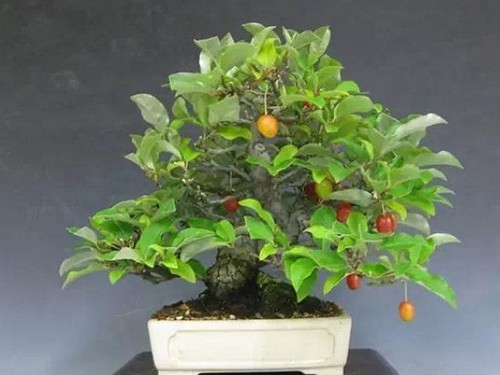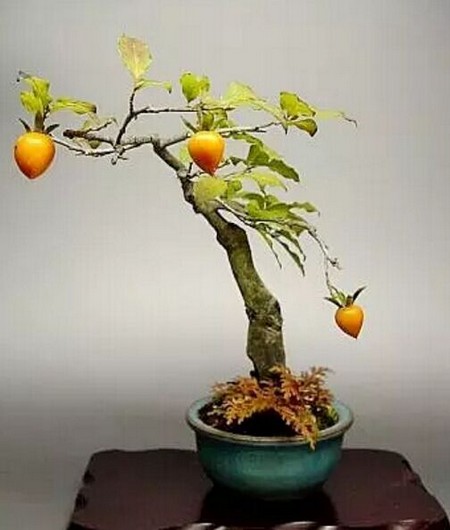Cultivation techniques of Elaeagnus angustifolia bonsai
Elaeagnus angustifolia is a kind of bonsai tree with beautiful shape, beautiful leaves, rich flowers and bright fruit. Because its plant is small, it is often used to make medium, small or miniature bonsai. It is displayed on the desk, several shelves, etc., Qiu branch green leaves, plain flowers and red fruits, very beautiful.

Spring and March is the most suitable for transplantation. Whether it is planted on the ground or in a pot, it needs to have a good lump of soil. Potted plants are mainly for halls and indoor furnishings, with ordinary cultivation soil on the pot, can be year-round indoor furnishings or placed in the outdoor shade maintenance. Turn the basin and change the soil once in 2-3 years, and apply liquid fertilizer 3-4 times before the arrival of midsummer, the basin soil should be dry and wet. In order to produce a large number of results, we should continue to fertilize in autumn and continue to watch in the bedroom in winter.
Can also be used to make tree stump bonsai, in southern China is often into the mountains to dig wild old tree stump, first in the mud basin flat tie shape, formed and then planted into the bonsai basin. This method will destroy the original mountain forest vegetation and cause soil erosion.
Potted Elaeagnus mandshurica only blossoms but does not hang fruit, which is related to pot time and variety, and is closely related to nutrients and management methods. Elaeagnus mandshurica is easy to bear fruit in the mountains because of its long growth time, well-developed roots and the ability to absorb nutrients from a large amount of soil. However, the soil planted in the basin is limited, and only after several years of growth and well-developed roots can it blossom and bear fruit under the condition of adequate fertilizer and good light and ventilation.
Different varieties of Elaeagnus angustifolia have different results, such as Elaeagnus angustifolia and Elaeagnus angustifolia. Compared with Elaeagnus angustifolia, it is difficult for small leaves to blossom and bear fruit, and large leaves can cover the whole tree. In order to achieve a high rate of fruit setting after flowering, rotten farm manure should be applied every 10 days during the growing period, so that fruit setting can reach more than 40% of the amount of flowering. Red fruits can be seen all over the trees in early spring.
Time: 2019-05-25 Click:
- Prev

Types and characteristics of bonsai buds of fruit trees
In recent years, with the improvement of people's living standards and the continuous improvement of office and living conditions, the beautification of the environment is rich and colorful. Potted fruit trees and bonsai have become a major landscape and fashion for indoor and outdoor greening decoration, such as rooms, balconies, guesthouses, hotels, parks, courtyards and so on. Generally speaking
- Next

Soilless cultivation techniques of Family Flower Bonsai
The soilless cultivation technology of flower bonsai is to put perlite, vermiculite or other light stones in the flowerpot (do not use plant decay, organic humus such as sawdust and cottonseed shell as cultivation substrate), and then add inorganic salt nutrient solution to cultivate flowers. Nutrient solution contains a variety of disinfectants
Related
- Fuxing push coffee new agricultural production and marketing class: lack of small-scale processing plants
- Jujube rice field leisure farm deep ploughing Yilan for five years to create a space for organic food and play
- Nongyu Farm-A trial of organic papaya for brave women with advanced technology
- Four points for attention in the prevention and control of diseases and insect pests of edible fungi
- How to add nutrient solution to Edible Fungi
- Is there any good way to control edible fungus mites?
- Open Inoculation Technology of Edible Fungi
- Is there any clever way to use fertilizer for edible fungus in winter?
- What agents are used to kill the pathogens of edible fungi in the mushroom shed?
- Rapid drying of Edible Fungi

